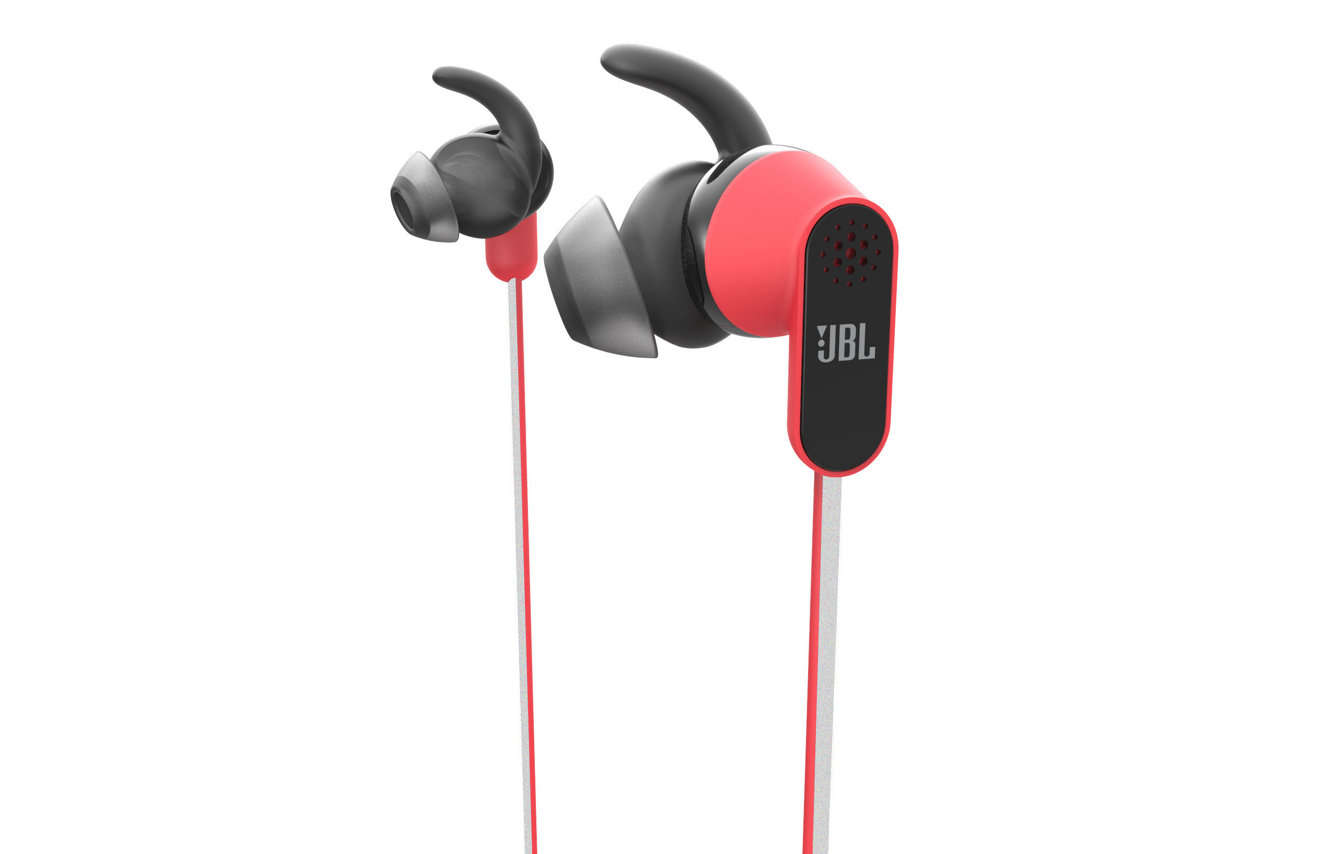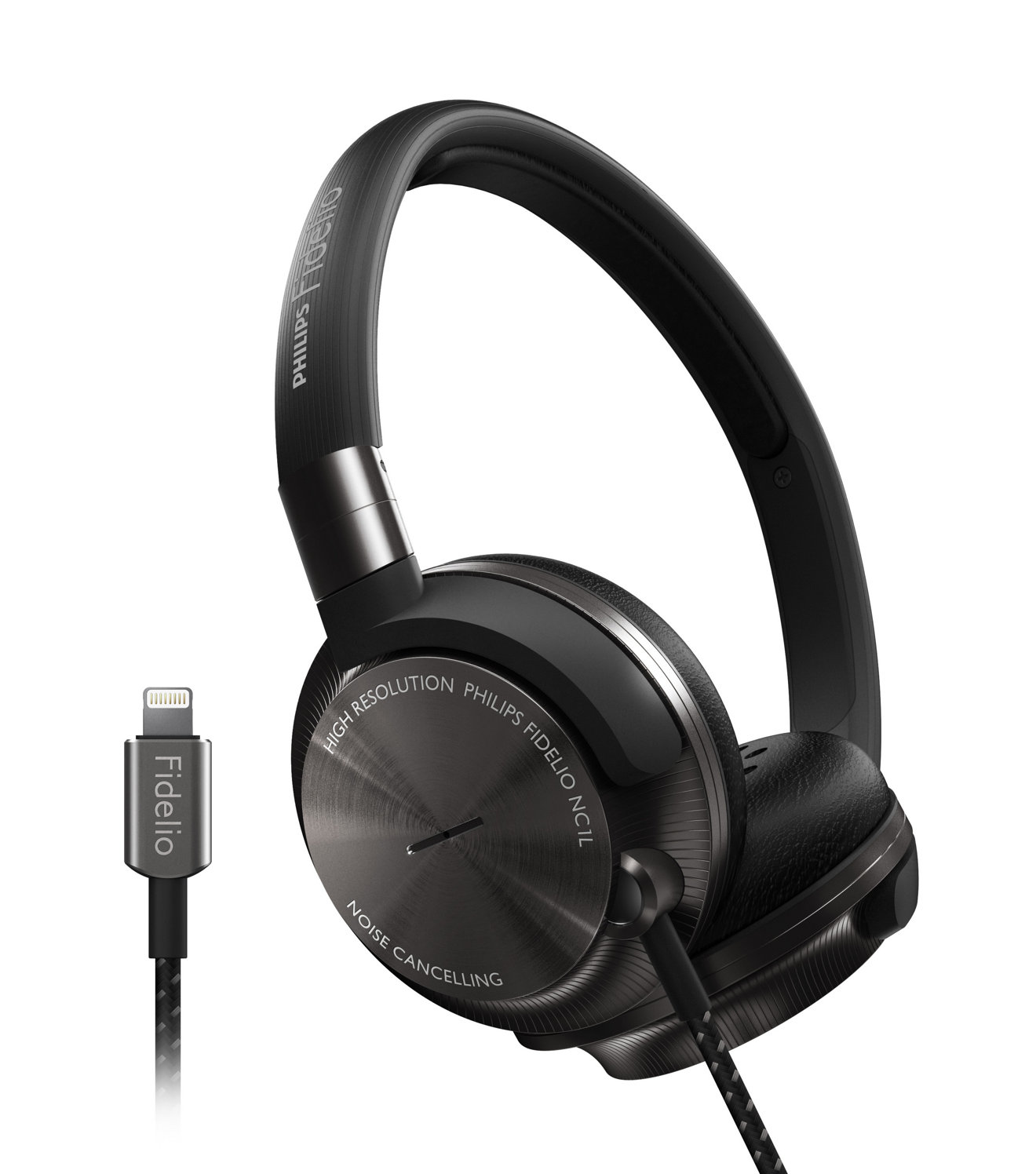Six months after Apple first announced a program that would allow headphone manufacturers to connect their cans directly to an iOS device's Lightning port, the first models to take full advantage of the Lightning port's capabilities are being shown off at the Consumer Electronics Show in Las Vegas.
The two new models — Â JBL's Reflect Aware in-ear version and Philips's Fidelio NC1L on-ears — Â not only draw audio signals from the Lightning port, but power as well. That enables both sets to provide active noise canceling without the need for batteries.
JBL's Reflect Aware are designed for athletes, with a system that JBL says is the first to specifically allow the mixing of ambient sounds with active noise cancellation. This could allow runners, for instance, to hear a car horn but remove engine noises when running on the road.
Reflect Aware also features a four-button remote control and a "rugged, sweat-proof design." There is no word yet on availability, but they will come in at $149.99 when they do go on sale.
Philips's Fidelio NC1L, meanwhile, is the company's second set of Lightning-connected headphones. They announced the Fidelio M2L last September, though the earlier model has yet to ship in the U.S.
Like its predecessor, the NC1L features a 24-bit DAC. The NC1L adds active noise cancellation — powered by the Lightning connector — Â with four microphones that analyze the environment inside and outside the earcups.
Philips expects the NC1L to hit North American shores in April with a suggested retail price of $299.
At press time, AppleInsider had not yet been able to confirm if either of these headphones could be used with a standard headphone jack, either through an adapter or other means.
 Sam Oliver
Sam Oliver









 Malcolm Owen
Malcolm Owen
 Marko Zivkovic
Marko Zivkovic
 Christine McKee
Christine McKee
 Andrew Orr
Andrew Orr
 Andrew O'Hara
Andrew O'Hara
 William Gallagher
William Gallagher

 Mike Wuerthele
Mike Wuerthele




-m.jpg)



22 Comments
Seems rather embarassing that Apple's Beats did get there first.
seems rather odd to use cords for headphones designed for sports use. however, I'm not in marketing so who the heck am I to question.
seems rather odd to use cords for headphones designed for sports use. however, I'm not in marketing so who the heck am I to question.
Cords are not a hindrance to running, walking, biking etc. The alternative is an uncomfortable band that connects the two ear pieces and contains the wireless electronics. I'd rather have the wire.
seems rather odd to use cords for headphones designed for sports use. however, I'm not in marketing so who the heck am I to question.
You don't need to be in marketing to figure this out: it depends on the activity. Headphone cords are inconvenient for some sports, less so for others. Walking, cycling, running? Cords are not really a big issue.
Football quarterbacks throwing warmup passes on the field? Yeah, the cord is an issue. In the gym? Yes, the cord can easily catch on equipment.
In some cases, the cord is a benefit. Let's say you're a snowboarder and you have your smartphone in your inside jacket pocket and listening to earbuds. You pull out an earbud to talk to your lift chair partner but your hands slip and you drop the earbud. Say goodbye to the wireless earbud which falls into the powder 60 feet below the lift. A wired earbud falls six harmless inches, dangling against your jacket.
Back in the day, I used to run string through my ski jacket sleeves, from wrist to wrist. At each end, I tied my glove/mitten to the string. Never lost a glove from the lift chair. Wireless/cordless isn't always better.
Is this the beginning of iPhone audio jack's demise? I would think Bluetooth headphones
would work better than this. Seems like a waste to go this way using Lighting with
Bluetooth options at the ready.
DM